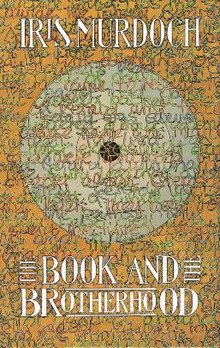|
The Book and the Brotherhood
The Book and the Brotherhood is the 23rd novel of Iris Murdoch, first published in 1987. Considered by some critics to be among her best novels, it is the story of a circle of Oxford University graduates in 1980s England. The eponymous book is a theoretical work on Marxism which is to be written by a member of the group. After graduating from university the friends had agreed to finance the writing of this book as a 'brotherhood' but grow uneasy as no written work is in sight and the stipend continues to be paid. PlotDavid Crimond, tasked with writing the book, resurfaces at a Commemoration ball the friends attend. His sudden re-appearance induces the group to attempt resolving the untenable situation by pressing for clarification. In turn they find themselves confronted with how far removed they are from their former Marxist beliefs and their own philosophical disorientation. As Crimond promises progress in the book, his draw causes the members of the circle to plunge into chaos. Main characters
Major themesCrimond is a classic example of Murdoch's "enchanter" archetype: the enigmatic character whose charisma inspires others to devote themselves to him. The Book and the Brotherhood joins a novel of ideas with finely-drawn characters in unusually emotionally intense relations to each other. It is notable for its detailed, wide-ranging opening scene at an Oxford ball during which every major character in the novel is introduced. The London Review of Books highlights the upper-middle class establishment background of the majority of characters and Murdoch's ability to trace the limits of this social class,[2] while the New York Times describes the book as 'a triumphal celebration of literacy as a social bond'.[3] Awards and nominationsThe Book and the Brotherhood was shortlisted for the 1987 Booker Prize.[4] References
|
||||||||||||||||||||||||||
